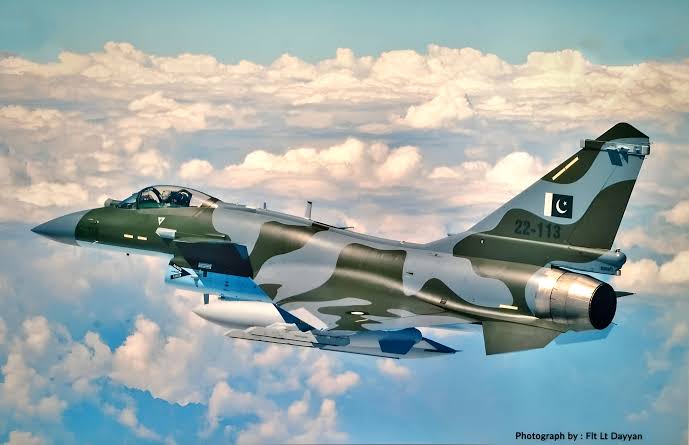Pakistan’s J-10C Fighter In Aerial Drills with Qatar’s Eurofighter Typhoon
According to the Pakistan Air Force, its J-10C fighter jets would "confront" Eurofighter Typhoon fighter jets, potentially providing insights into the effectiveness of China-made fighter jets when facing Western-made platforms.
(DEFENCE SECURITY ASIA) — Eurofighter Typhoon belonging to the Qatar Air Force and Pakistani Air Force’s J-10C are engaged in air exercises named “Zilzal-II,” organized by the Gulf country.
This marked the first encounter for fighter jets with canard design.
According to the announcement by the Pakistan Air Force, the Zilzal-II air exercise provided a realistic scenario for aerial warfare, testing the operational readiness of participating air forces.
The exercise represented the first overseas deployment for China-made J-10C fighter jets of the Pakistan Air Force since their induction into the air force of the South Asian country in March last year.
The statement from the Pakistan Air Force did not specify the actual number of J-10C fighter jets deployed to Qatar for the air exercise at an airbase in Doha, Qatar.
The exercise took place at the Doha airbase, not at the Al-Udeid airbase, which is believed to host U.S. fighter jets possibly engaged in airstrikes against Houthi armed groups in Yemen at the moment.

According to the Pakistan Air Force, its J-10C fighter jets would “confront” Eurofighter Typhoon fighter jets, potentially providing insights into the effectiveness of China-made fighter jets when facing Western-made platforms.
Both aircraft are equipped with Active Electronically Scanned Array (AESA) radars and can employ Beyond Visual Range (BVR) air-to-air guided missiles such as the Meteor by MBDA and PL-15.
“The participation of J-10C fighter jets from Pakistan in this air exercise signifies a crucial step for the Pakistan Air Force in becoming a technologically advanced and formidable air force.”
“The acquisition and operation of these fighter jets demonstrate the dedication of the Pakistan Air Force to maintain a technologically advanced force capable of meeting challenges to defend Pakistan’s airspace,” according to the statement.
In the Zilzal-I exercise held in 2020, J-17 fighter jets of the Pakistan Air Force operated alongside Mirage 2000 fighter jets of the Qatar Air Force, as well as F-15 and Rafale aircraft.
The J-17 Thunder fighter jet was jointly developed by Pakistan and China.

In early 2022, as part of its efforts to compete with Rafale aircraft acquired by India, Pakistan announced the purchase of 25 J-10 fighter jets from China.
The single-engine J-10 is developed by the Chengdu Aircraft Corporation.
According to Pakistan’s Interior Minister Sheikh Rasheed Ahmad at the time, the acquisition of 25 J-10 jets from China was the country’s initiative to compete with the 36 twin-engine Rafale jets manufactured by France and acquired by its main adversary.
Pakistan and India are major adversaries, and both military forces have engaged in several conflicts, particularly concerning the Kashmir issue, a region predominantly Islamic but governed by India.
Pakistan acquired the latest variant of the J-10, the “C” version, equipped with advanced features such as Active Electronically Scanned Array (AESA) and Beyond Visual Range (BVR) air-to-air guided missiles like the “PL-15.”
The PL-15 is claimed to have an effective range between 200 km and 300 km, as asserted by China, and is considered a primary competitor to the U.S.-produced AIM-120 “AMRAAM” air-to-air guided missile.
The J-10C is also said to use a locally produced Chinese engine called “WS-10C” instead of the Russian-developed Saturn AL-31F engine to avoid complexity in selling the aircraft to Pakistan. — DSA


Comments are closed.